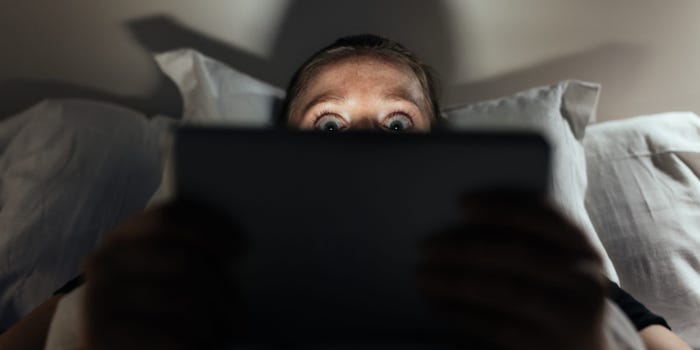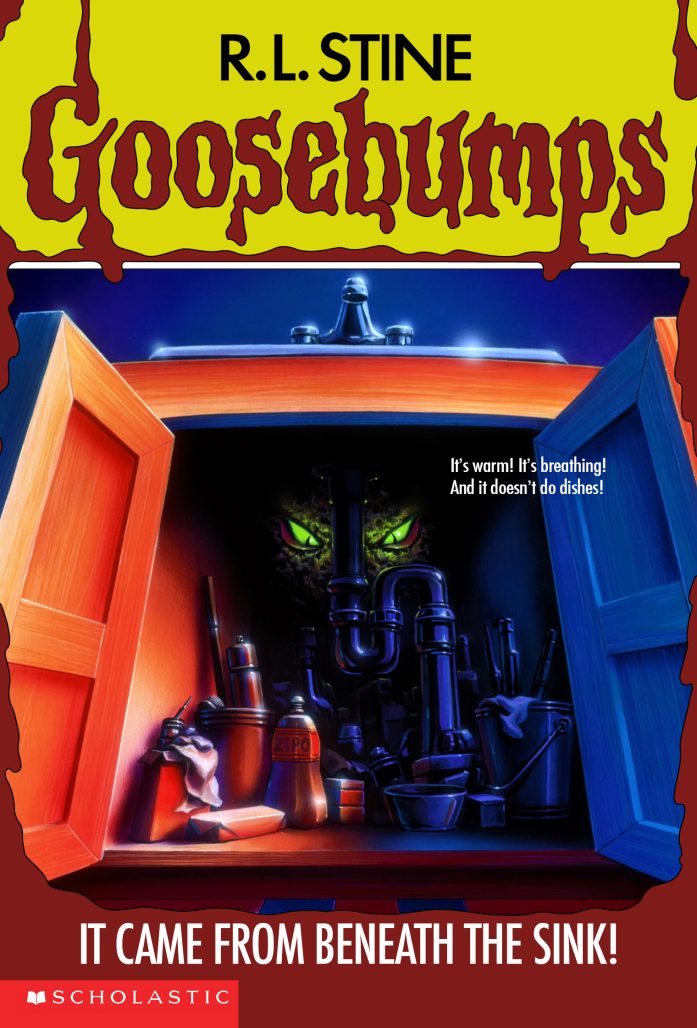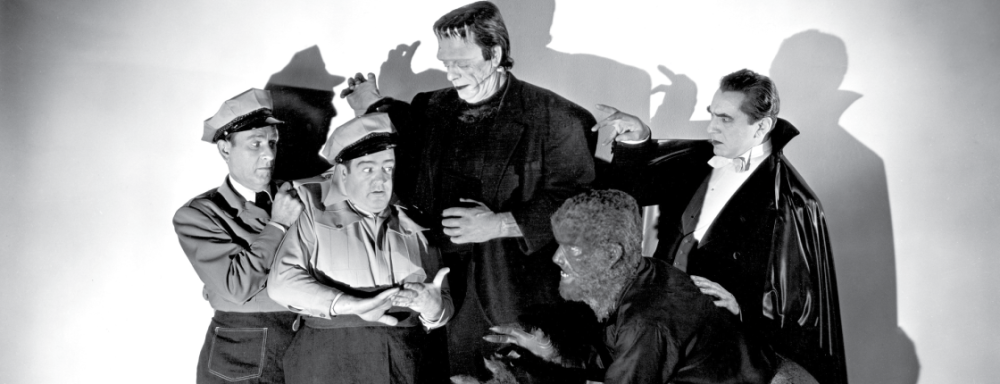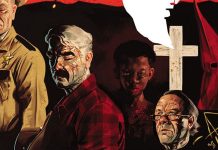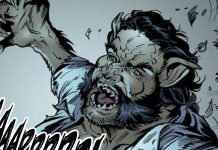The Beat’s Greg-Gory Pall Thrillber is a connoisseur of the dark arts who has been accused of… several crimes against God and nature. Each week in Silber Bullets, he takes a terrifying look at the spookiest, scariest, and most blood-curdling bits of suspense and horror that he refuses to let out of his head.
Horror fans are a unique breed of geek. I don’t like the term ‘geek’ very much for a bunch of reasons that are best left for another article, but it’s a useful short-hand for those with an intense passion for subject matter deemed too unsophisticated, uncool, or esoteric for the mainstream. Horror in particular is decidedly repulsive to those who don’t buy into its grotesque aesthetic or morbid subject matter, so horror fandom is inherently subversive. To those who don’t “get it,” those who go out of their way to indulge in such provocative art must seem very strange indeed. After all, what kind of person willingly scares themselves? Are they masochists? Do they just want to prove how brave they are? Are they actually sadists with secret desires to commit unspeakable crimes, and vicariously enjoy seeing violence inflicted upon fictional characters?
I can tell you from experience that none of that is true about the vast majority of horror fans. It’s kind of like how people assume heavy metal fans all look like Lemmy, but if you go to a metal concert, most of the audience is going to look like… well, like me. You know, dorks. Most horror fans I’ve met are big ol’ softies, and can even be quite squeamish. Is it all that surprising? Horror wouldn’t be much fun for someone who couldn’t be phased by it. But every horror fan comes into the genre differently, so I’ll just speak for myself here and tell you about my own journey into darkness.
Before I consciously realized how much I love horror, I loved Halloween. Some of my earliest memories are of dressing up as Billy, the blue Power Ranger, every year from preschool to first grade, when I decided to put away my proverbial childish things and dress as Spider-Man instead. Not only was it an excuse for everyone in the world to play dress-up, but I had permission to go door-to-door demanding candy… and receiving it!
I strongly believe we, as a society, underestimate how much the feeling of want characterizes childhood. Even if you grow up rich (which I certainly didn’t), you have to go through an adult for even the pettiest of material desires, like candy, and you’ll only get what you want so much of the time. Obviously, by the time most of us reach adulthood we’ve learned that it’s not wise to eat candy all day every day, but the fact remains that if you have even a little disposable income, you can buy and eat candy if you’d like. We really don’t appreciate enough how precious those moments are for kids when they finally get the petty things they want, whether it’s a new toy on their birthday or candy on Halloween.
In that way, perhaps I subconsciously saw Halloween not necessarily as a celebration of horror, but hedonism, and all the vampires and witches and whatnot just added to how upside-down the whole day was. Either way, it was only natural that I’d come to love the Halloween aesthetics of ghosts and skeletons and the like as much as I love the holiday itself.
Like many millennials, my first experience with genuine – albeit age-appropriate – horror fiction was the Goosebumps books by R.L. Stine, when I was about seven. I’m not sure which one I read first. There were dozens of those things from the main series alone, not including spinoffs like Tales to Give You Goosebumps and Choose Your Own Goosebumps, and I just read whichever ones I could get my hands on. The excitement started wearing off once I realized how predictable Stine’s formula was (which I suppose explains how he pumped out so many books in such a short time), but the fast-paced storytelling and cheeky humor definitely left an impression on me, and prompted me to seek out more spooks.
I’ve talked before about how I could have a bit of an obsessive personality. It’s kind of the entire premise of this column, but it was especially true in elementary school. My dad would rent classic horror movies like The Mummy and Abbott and Costello Meet Frankenstein from Blockbuster for me, because classic Universal Monsters were the only horror movies he felt comfortable showing a boy my age. I became fascinated with “true” ghost stories and while I was never willing to say I fully believed in ghosts, I did decide that I would become a paranormal investigator when I grew up. I figured that could be my day job (err, night job) while I write books on the side. And yes, I told adults all about this when they asked what I wanted to be when I grow up.
My hunger for horror was insatiable, and I talked about it constantly. In retrospect, I can see how it might have disturbed some adults that a 9-year-old was reading Edgar Allen Poe, whom I initially assumed was a contemporary writer because I ordered a collection of his short stories from the Scholastic catalog much as one would with The Bailey School Kids or Bruce Coville. In any event, many of the adults in my life, including my parents and teachers, were troubled by my passion for horror, and did not keep their discomfort secret. At least one teacher banned Goosebumps from her classroom, and I was discouraged from reading horror in favor of classic adventure fiction like Tom Sawyer instead.
For many years, unfortunately, it worked. I didn’t know anyone else who loved horror as much as I did, and the efforts to make me feel strange for enjoying dark and disturbing fiction were successful. Ironically, I did develop a genuine appreciation for Mark Twain, especially when I discovered his obscure short story “Cannibalism in the Cars,” a satirical work about a group of congressmen who get trapped on a train in a blizzard and hold congressional hearings to determine who should get eaten first.
I wasn’t explicitly forbidden from enjoying horror, and while I regret how much time I spent not pursuing the passion I so clearly had, it’s not like I didn’t still partake in the genre from time to time. In eighth grade, I went down a Stephen King rabbit hole. That included his nonfiction and decidedly not-scary-at-all On Writing, but of course my way in was through horror novels like The Shining and Misery. Stanley Kubrick‘s iconic 1980 adaptation of The Shining was one of the first R-Rated movies I was given permission to watch, and it scared the bejeezus out of me. Not as much bejeezus as the book, though. I was afraid to take a shower for weeks after reading the infamous Room 237 scene (much different, and scarier, in the book versus the movie), and in my high school AP Language and Composition class, I did a presentation on “the lady in the tub had been dead a long time” for an assignment about a sentence we consider to be brilliantly crafted.
But really, it wasn’t until the start of the pandemic in 2020 that I fell back into horror fandom as hard as I did as a young child. A lot of people are surprised and weirded out when I tell them I rekindled my love of horror right when lockdowns for a deadly global pandemic began. I don’t blame them. How could I possibly want to think more about death and dying at a time like this? It’s not that I wasn’t anxious and depressed, because I most certainly was, but that these overwhelming feelings of negative emotions quickly transformed into a numbing sensation. Every day brought with it more bad news, and with limited ability to safely leave my apartment and mix up the negativity with new experiences, I needed something to jolt me out of my rut.
I’ve developed a healthy taste for campy horror and comedy horror and horror that effectively tells a spooky story without necessarily being scary, but for the most part – and certainly when I’m at my lowest – when I watch a horror movie, I want to actually get scared. It reminds me that I can still feel something. Do I want nightmares? Not necessarily, and there are very few horror movies I’ve watched as an adult that have given me nightmares anyway. And when they did, the kind of grisly nightmares I got from Henry: Portrait of a Serial Killer were preferable to the kind of mundane nightmares I usually get: relationship tension, financial crises, bad memories, that old standby where I have to take a test I haven’t studied for and also my teeth are falling out… I’d take getting chased by a serial killer any day over all that.
Plus, horror helps put my fear into perspective. I’m afraid of environmental collapse, of deadly diseases, of Nazis, of failure… just to name a few. I’m sure many of you share those same fears. They’re all valid fears and all need to be addressed in one way or another. But chances are, most of you aren’t, at this very moment, getting chased by a machete-wielding psycho. Horror puts us in the shoes of characters experiencing far more extreme, visceral, and immediate fears than any of us will ever experience. So when the lights go back up, and we take a breath of relief that we’ll probably never have to fight off a horde of flesh-eating zombies, our more mundane, everyday fears haven’t gone away, but they do seem more manageable in comparison.
Horror can be therapeutic, and I mean that in every sense of the word. It’s not just that it can momentarily soothe us in the ways I described above, but that horror can teach us a great deal about ourselves that we may not otherwise be forced to think about. All art is subjective, but horror especially so. Any given horror story affects every reader or viewer differently because each individual has had different life experiences that causes them to fear different things. I’ve mentioned before that while I enjoy The Exorcist and recognize it as a pristinely-crafted film, it doesn’t scare me as much as it seems to scare viewers who grew up Catholic (lapsed or otherwise), nor do many other horror films of its ilk steeped in Christian dogma. That’s not a value judgement, and I’m not passing judgement on people who were raised that way. I’m sure The Exorcist would terrify me if I was raised to believe that The Devil exists and demons could absolutely possess me if I’m not careful. But that’s not my background, so The Exorcist will never resonate with me on that level.
On the other hand, much of my favorite horror has laid bare my greatest fears. It can’t be a coincidence that Hereditary, Rosemary’s Baby, The Shining, Swamp Thing comics, and surely a bunch of other stories I’m not even thinking about explore themes of betrayal. I clearly have a crushing fear of the people I love and trust most turning against me. It’s something I’ve talked about ever since I started going to therapy as a teen, and it’s a conversation I’m sure I’ll continue to have. I probably didn’t need horror to realize that about myself, but horror makes our greatest fears more tangible, and therefore easier to process and talk about.
Sometimes horror reveals fears I never even realized I had. Cults, for example, are one of those recurring horror motifs that never fail to freak me out. I don’t have a clear answer for why that is. I’ve never been in a cult, and to the best of my knowledge, neither has anybody I’ve ever been close with. But noticing that so many of the horror movies that have scared me most have been about cults – like The Wicker Man, The Invitation, Midsommar, and Jordan Peele‘s Us – forces me to do some valuable soul searching. Why do cults scare me so much? Is it that I’ve struggled to feel accepted by different groups and communities throughout my life? Is it that I feel I’m too easily influenced by predatory people, and therefore vulnerable to cults? On the other hand, perhaps I’m repulsed by cults because I’m more stubborn and rebellious than I realize. I don’t know. For all I know it’s as simple as “I think it’s weird when a bunch of people dress alike.” In any case, it’s a fascinating mental journey.
I may not have been conscious enough of my emotions to understand or articulate it as a kid, but on some subconscious level perhaps I fell deep into horror because what I really wanted was to better understand myself. I never felt particularly brave as a child. Kids scared me. Grown-ups scared me. That dark spot under my bed at night scared me. I was that kid who started crying when the kindergarten teacher raised her voice at the class, even though I intellectually knew I wasn’t the one she was mad at. Spider-Man (2002) was one of my favorite movies after I saw it in 5th grade and a bona fide life-changing experience, but I was so scared when Norman Osborn turned into the Green Goblin that the first time I saw it in theaters, I pretended I had to go to the bathroom and came back when it sounded like the scary part was over.
Horror taught me that it’s okay to be scared. That it’s normal. That we need fear to understand ourselves and become stronger people. That if we don’t have fear, we probably aren’t living very fulfilling lives.


